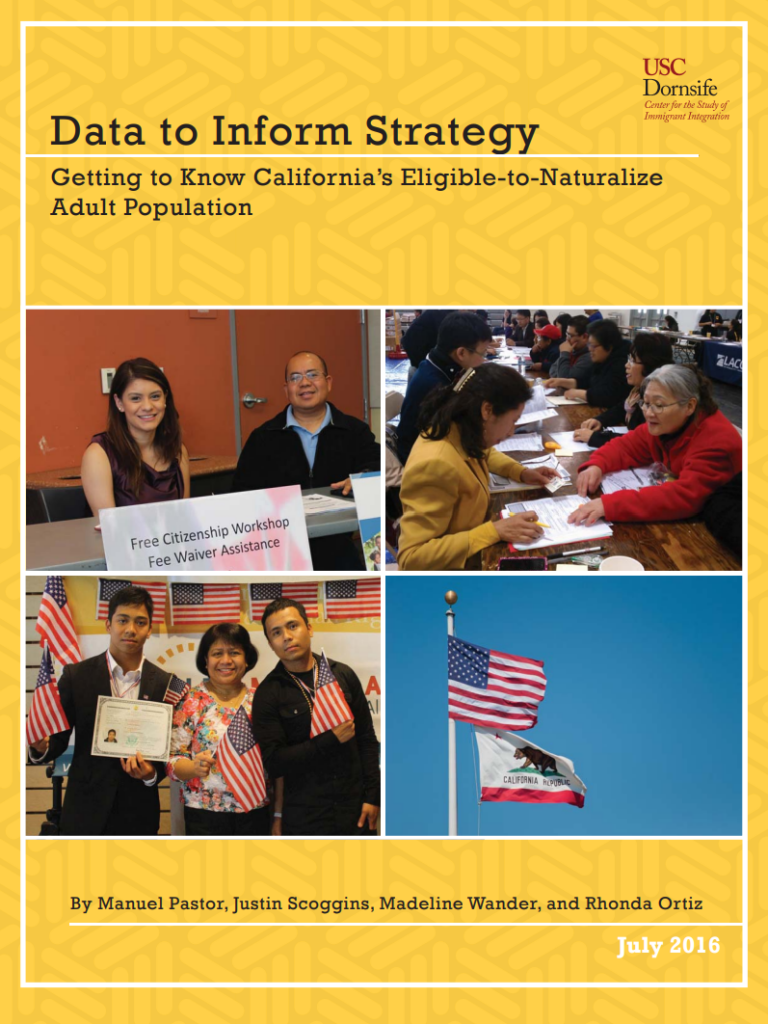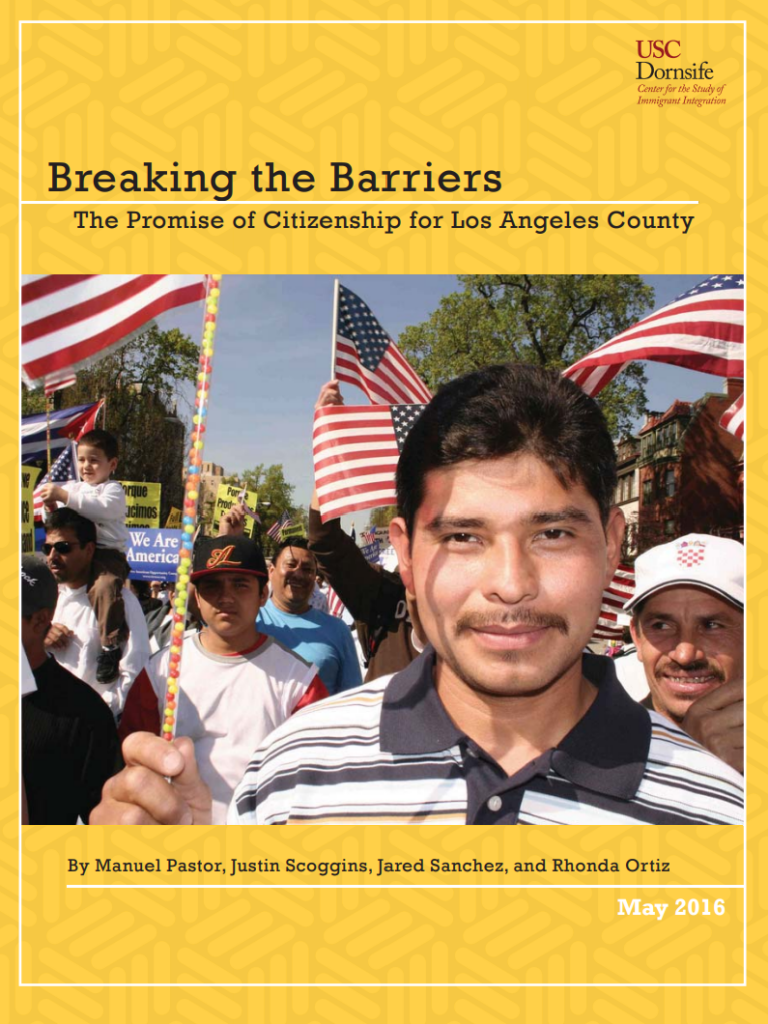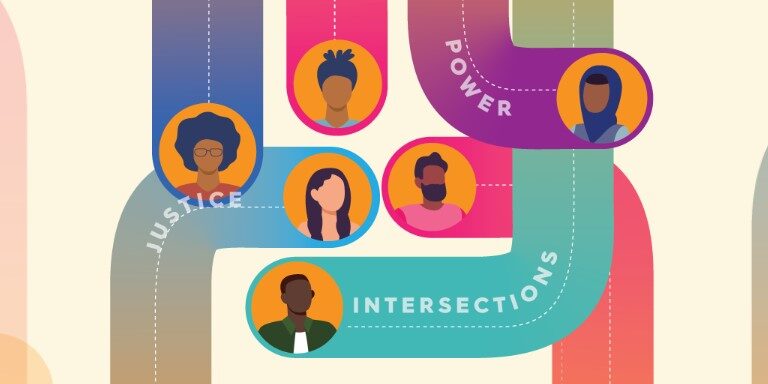This page features reports on the eligible-to-naturalize populations in California and in Los Angeles County.
Please note: reports dated earlier than June 2020 were published under our previous names: the USC Program for Environmental and Regional Equity (PERE) or the USC Center for the Study of Immigrant Integration (CSII).

Data to Inform Strategy: Getting to Know California’s Eligible-to-Naturalize Adult Population
July 2016
By Manuel Pastor, Justin Scoggins, Madeline Wander, and Rhonda Ortiz
Increasing naturalization among eligible immigrants in California—which is home to about one quarter of the nation’s adult legal permanent residents (LPRs) who are eligible to naturalize—not only benefits those individuals, but also our state as a whole.
Naturalization ushers in civic benefits, such as the right to vote and run for office, and economic benefits, such as increased earnings and income—as well as increased GDP and tax revenues.
What this all adds up to is a stronger California for everyone. However, many barriers stand in the way of naturalization, such as the high price of applying, a lack of English language skills, and a fear of the test being too difficult, among others.
California is well positioned to lead the nation in immigrant integration—this time through increasing naturalization rates—due to both the scale of California’s eligible-to-naturalize adult population, as well as the state’s robust landscape of immigrant-serving organizations.
Specifically, The California Endowment’s 10-year Building Healthy Communities (BHC) Initiative—which is currently investing in 14 under-served communities across California in an effort to scale local movement-building work to have statewide impact—provides a strategic springboard for this work.
We address three issues—why it is important to increase naturalization, who the eligible to naturalize are, and where in our state they call home.

Breaking the Barriers: The Promise of Citizenship for Los Angeles County
May 2016
By Manuel Pastor, Justin Scoggins, Jared Sanchez, and Rhonda Ortiz
Naturalization brings economic and civic benefits—and Los Angeles County is in a unique position to realize those gains with nearly one-tenth of the nation’s eligible-to-naturalize adults.
CSII’s report, Breaking the Barriers: The Promise of Citizenship for Los Angeles County, discusses the who, the why, and the what of naturalization: We offer a profile of the eligible to naturalize, suggest reasons why they should be supported in naturalizing, and detail which obstacles to naturalization—individual and structural—matter.
We also discuss the where: We provide tract-level maps of where the eligible to naturalize reside in the county, seeking to help groups focus on those areas with the greatest need for naturalization and to improve outreach to particular sub-groups.
We conclude by focusing on the when—and that is now. While the country is roiled by immigration politics, California and Los Angeles County have a unique opportunity to demonstrate what goes right when we welcome—rather than reject—immigrants.
Breaking the Barriers aims to inform the organizing and outreach efforts of those in the public and private sectors seeking to promote naturalization. After all, immigrant integration is in everyone’s interest. Developing local partnerships to encourage naturalization is a positive step toward achieving broader economic prosperity and stronger civic infrastructure. All this is necessary for the future of our region and our state.



